
Cues, Questions, and Advance Organizers
• Cues and questions should focus on what is important as opposed to what is unusual - Questions designed for deeper understanding will increase student interest • "Higher level" questions produce a deeper learning than "lower level" questions - Questions should require students to analyze information rather than just recall

Cues, Questions, and Advance Organizers
Cues, Questions, and Advance Organizers Slide_CurateInformation (2011) By Settle Ferriter. Research has shown this cuing and questioning policies account for 80% of all teacher-to-student interactions (Fillippone, 1998). Cues provide references for students about the content of a hour. Questions provide faculty with the shot to assess what.

Cues, Questions, and Advance Organizers
Cues provide hints for collegiate about the page of a lesson. Questions provide faculty with one shot to evaluate what students do not already knowledge. Advance organizers are introduced before a lesson and should provide adenine conceptual framework to help students organize concepts and education material.

PPT Cues, Questions, and Advance Organizers PowerPoint Presentation
Cues and questions are ways that a classroom teacher helps students use what they already know about a topic. Cues and questions are similar in that they both involve "hints" about what students are about to experience or already know about a topic. A teacher may cue the class by telling them they are going to watch a video about cells.
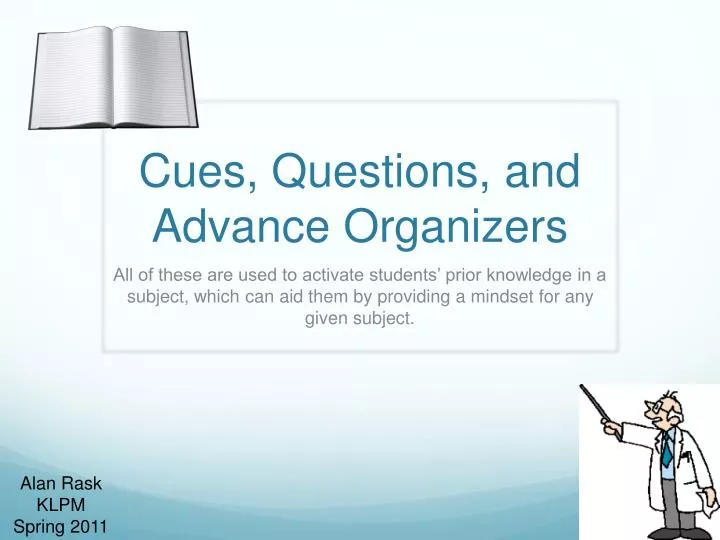
PPT Cues, Questions, and Advance Organizers PowerPoint Presentation
Cues, questions, and advance organizers are among the tools and strategies that teachers use to set the stage for learning. These tools create a framework that helps students focus on what they.

Cues, Questions, and Advance Organizers
Cues provide hints for students about the content of a lesson. Questions provide teachers with the opportunity to assess what students do not already know. Advance organizers are introduced before a lesson and should provide a conceptual framework to help students organize concepts and instructional material.
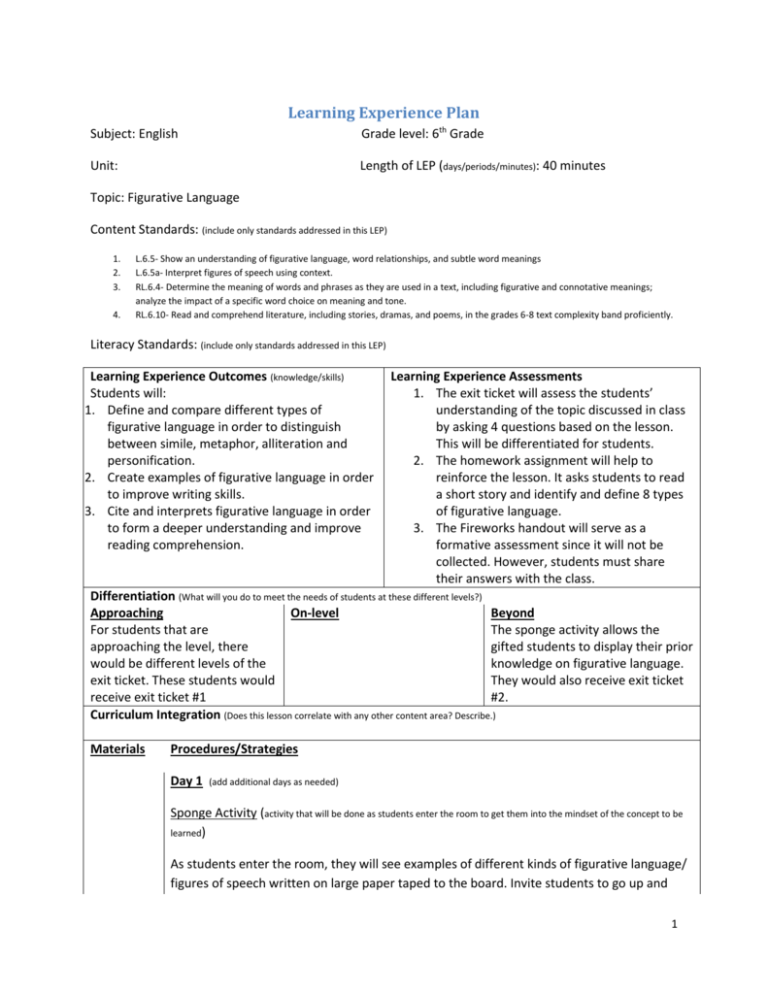
Questions, Cues & Advance Organizers
The use of cues, questions, and advance organizers are tools and strategies that help teachers focus student's attention on new material that they are about to learn and help guide them through the learning process. Advanced organizers provide students with a framework that internally organizes new information to help students create meaningful.

Cues, Questions, and Advance Organizers
Chapter 4: Cues, Questions, and Advance Organizers. Ceri B. Dean, Elizabeth Ross Hubbell; View the Resource. Key Takeaways. How to create an advanced organizer. This chapter explains four kinds of advanced organizers: expository, narrative, skim ming, and graphic organizers. Citation.

PPT Cues, Questions & Advance Organizers PowerPoint Presentation ID
task generates questions and hypotheses about what may or may not work. 9. Cues, Questions, and Advance Organizers Cues, questions, and advance organizers help students use what they already know about a topic to enhance further learning. Research shows that these tools should be highly analytical, should focus on what is
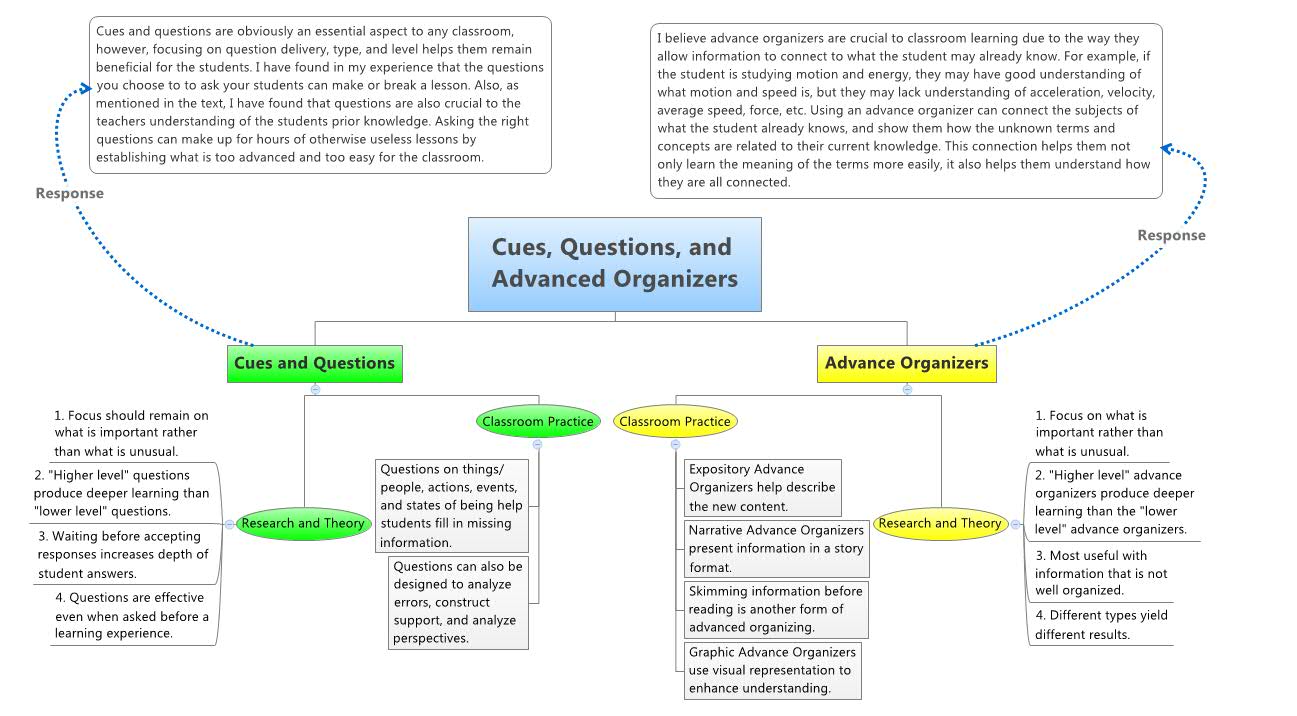
Cues, Questions, and Advanced Organizers XMind Online Library
Instructional Strategies:

Cues, Questions, and Advance Organizers
Cues, questions and advance organizers. Needless to say, both teachers and administrators can benefit from Marzano teaching strategies. You all have the same goal—to give your students the tools they need to be successful in the classroom and beyond.

Cues, Questions & Advance Organizers Advance organizers, Cue
Cues, Questions, and Advanced Organizers Giving students a preview of what they are about to learn or experience helps them activate prior knowledge. This strategy gives students the opportunity to connect what they already know to what they need to know. Questions should focus on what is central and most important.

PPT Cues, Questions, and Advance Organizers PowerPoint Presentation
The new question-of-the-week is: What are the best ways to activate and build students' background knowledge, and why is it important? Our students have a great deal of background knowledge that.

Cues, Questions, and Advance Organizers
Cue, Questions, and Advance Organizers Objective: Incorporate cues, questions, and advance organizers into your instruction to help structure student learning. Topic(s): School Supports Subtopic(s): Instructional Strategies Audience: Teachers; Grade Level: (3-5) Upper Elementary (6-8) Middle (9-12) High; Tier: Tier 1 (preventative) Module: Open.
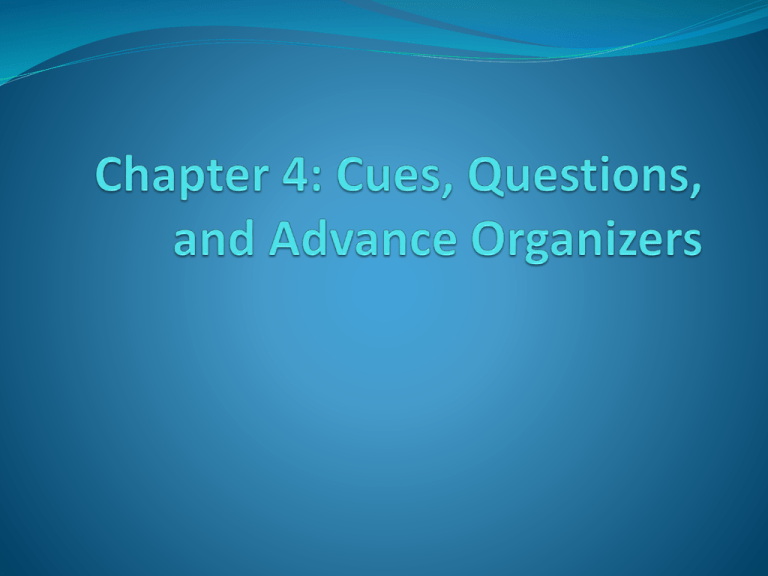
Chapter 4 Cues, Questions, and Advance Organizers
Setting objectives and providing feedback Generating and testing hypotheses Cues, questions, and advance organizers Marzano's 9 Instructional Strategies In Infographic Form About The Author TeachThought Staff TeachThought is an organization dedicated to innovation in education through the growth of outstanding teachers. Previous Post
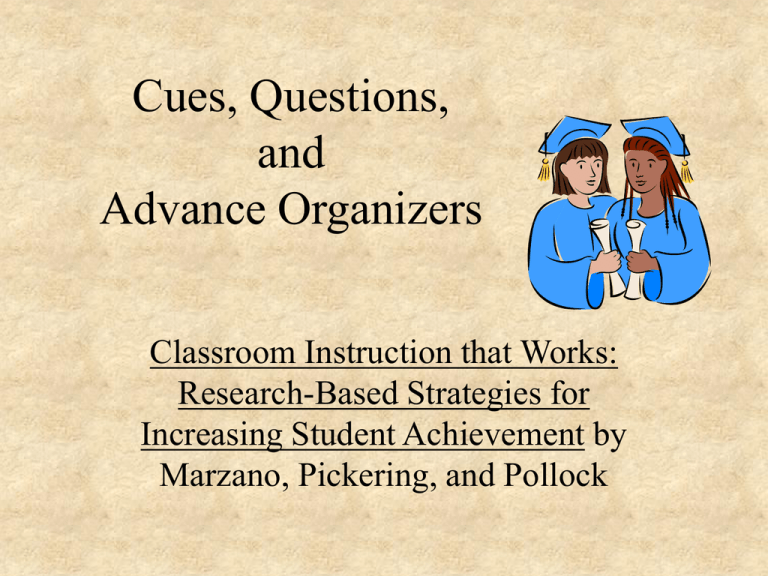
Cues, Questions, and Advance Organizers
What are the four recommendation of cues and questions? 1. Focus on what is important. 2. Use explicit cues. 3. Ask inferential questions. 4. Ask analytic questions. How do explicit cues help students learning?